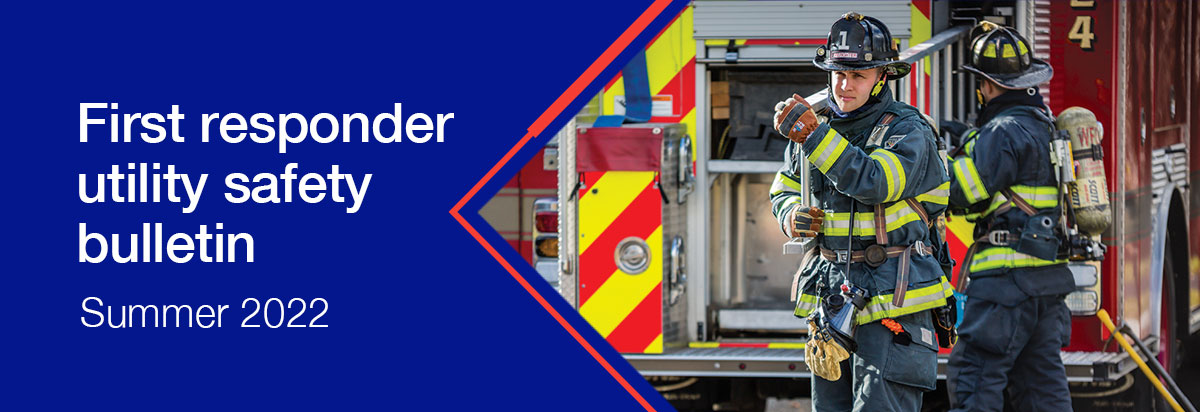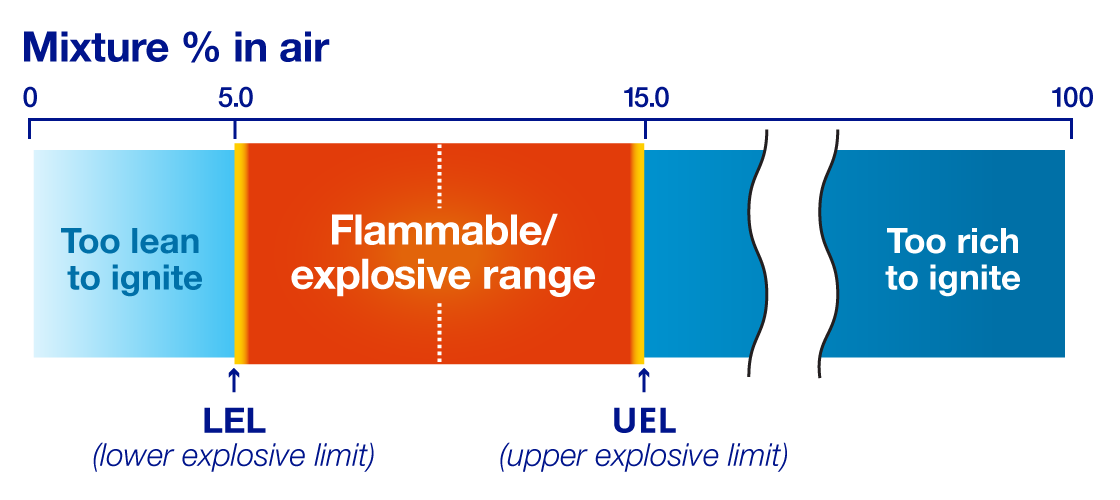| View in browser > |
 |
| Eliminating spark hazards |
|
Even the tiniest spark can ignite leaking natural gas in a confined space when the gas-to-air ratio is between 5 and 15 percent. Responders who are first on the scene can reduce the risk of ignition by eliminating spark hazards in the vicinity of any known or suspected gas leak. |
 |
| Spark hazards are everywhere! You may already be aware of some common ones, such as matches, electrical switches and battery-operated equipment. But did you know that doorbells, TV remotes and even your boots shuffling on a doormat can all create a spark that could ignite a gas leak? When you know or even suspect that gas is leaking, make sure everyone at the scene avoids using anything that could create a spark. |
| Do not: |
| • |
 |
Ring doorbells. Knock instead. |
|
| • |
 |
Use garage door openers. |
|
| • |
 |
Use a TV remote or any other type of remote controller. |
|
| • |
 |
Operate light switches. |
|
| • |
 |
Turn on or off any appliance or other electrical device. |
|
| • |
 |
Use telephones, cell phones or pagers. |
|
| • |
 |
Use a flashlight (unless it is intrinsically safe). |
|
| • |
 |
Light a match, use a lighter, or smoke cigarettes, e-cigarettes or vape pens. |
|
| • |
 |
Step on doormats or shuffle across carpet. Friction from boots could create a spark of static electricity. |
|
| • |
 |
Use any form of electronic ignition. |
|
| |
|
|
 |
| Be alert for spark hazards from appliances and other devices that automatically cycle on and off, such as furnaces, thermostats, refrigerators, water heaters and security systems. |
|
|
|
Even after securing the area and eliminating potential spark hazards, you must continue to anticipate gas leak ignition or explosion and take these precautions: |
| • |
 |
Park emergency vehicles away and upwind from the area. Never park over manholes or storm drains. |
|
| • |
 |
Always wear PPE and SCBA. |
|
| • |
 |
Use intrinsically safe radios and flashlights. |
|
| • |
 |
Create an isolation zone. Evacuate the area, secure the perimeter and reroute vehicle traffic. |
|
| • |
 |
When possible, identify the source of the leak, and if it is safe to do so, shut off the fuel source at the aboveground meter valve or appliance piping. |
|
| • |
 |
When the situation warrants, call your dispatcher to contact the local electric utility to disconnect the electric service to the building. Do not attempt to shut off circuit breakers or pull the electric meter, which could ignite the gas. |
|
| |
|
If you have been trained to do so, use a combustible gas indicator (CGI) to confirm the leak and determine whether it poses a risk of ignition or explosion. Before entering a building, assess the hazard level around the building as well as nearby buildings. Never enter a building unless gas concentrations are well below the lower flammable limit of 5 percent gas in air, which will read 100% on most CGIs. |
|
|
 |
| Case study |
| A fire crew responded to the report of a natural gas odor and conferred as they approached the doorway to the residence. They felt the gas did not smell “all that thick,” so they entered the building to take “a quick peek” without utilizing air-monitoring equipment. As they entered, a spark from a thermostat ignited the accumulated gas and caused an explosion that blew a door off its hinges and subjected the crew to an intense pressure wave. Once the presence of a gas odor was confirmed, the crew should have employed air-monitoring equipment and evacuated the premises. |
|
|
|
Keep yourself, your team and the public safe this summer.
Visit firstresponder.ngridsafety.com today to register and
complete your utility safety training. |
|
|
|
| |
| |
|
| To report emergencies, call 911 and National Grid immediately. |
| |
 |
| In case of gas emergencies: |
 |
Long Island and the Rockaways:
911 and 1-800-490-0045 |
 |
Metro New York:
911 and 1-718-643-4050 |
 |
Upstate New York:
911 and 1-800-892-2345 |
 |
Massachusetts:
911 and 1-800-233-5325 |
|
|
|
|
| |
|
|
|
| |
| |
|
 |
#13630 © 2022 Culver Media, LLC |
|
| |
|
|
|
 |
|
|